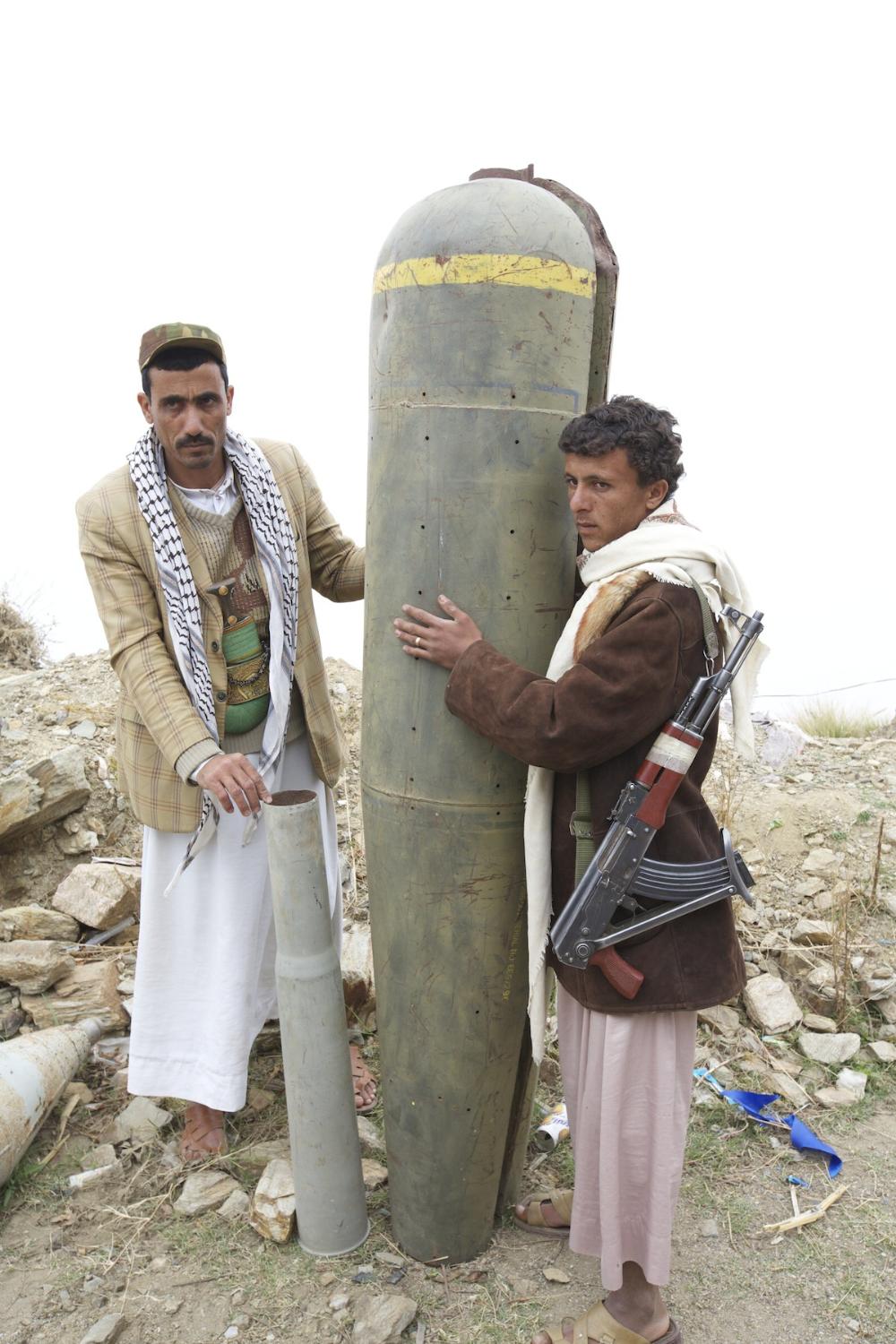
Listen to the Story:
A Yemeni man described the chaos that accompanied an air strike near his village on a Monday morning in April, the day of the weekly market.
“Hundreds of people from the surrounding villages were in al-Amar when the bombs were dropped,” he told Human Rights Watch. “When people saw the parachutes they fled, leaving all their produce, cars and livestock. I went to find out what the parachutes had dropped. I do not know what it is, but I thought it was important to keep away from children who might play with it.”

He told Human Rights Watch he’d heard that the attack had wounded two people. HRW confirmed that several people injured in the incident were treated at a local hospital. The objects the Yemeni man discovered on the ground were later identified by HRW as parts of a US-made weapon, the CBU-105 Sensor Fuzed Weapon from Textron Systems of Wilmington, Massachusetts.
When the 2008 Convention on Cluster Munitions came into effect in 2010, this particular weapon looked to have skirted the ban. Textron included safeguards never before seen in a cluster bomb, which it said would prevent civilian harm by eliminating the hazard of unexploded ordnance. Even so, weapons experts and anti-cluster bomb activists agree that the CBU-105 SFW is indeeed a cluster bomb. In fact, the US Department of Defense has called it that.
But Textron describes it differently. Company literature presents the CBU-105 SFW as a “smart air-to-ground area weapon designed to defeat moving and fixed targets on land and at sea. With several proven features to prevent hazardous unexploded ordnance, the SFW is the only weapon of its kind in the US Air Force inventory.” The weapon, delivered by a warplane such as an F-15 fighter jet, can destroy enemy concentrations of military vehicles and equipment in a single pass.
It’s in the inventory of two countries whose planes have been bombing Yemen. Saudi Arabia and the United Arab Emirates have spent hundreds of millions of dollars on SFWs from Textron with US government approval. When these two nations started to stockpile SFWs several years ago, each weapon cost about $360,000. This year the Saudi-led air campaign against Yemen’s Houthi rebels began to use the weapon in the Houthis’ home province of Saada, near the Saudi border. This has been raising concerns among human rights workers and causing panic — and perhaps some injuries — among Yemeni civilians.
This sales video shows how the CBU-105 SFW works.
https://youtu.be/9HkauuIyDsM
Read more:
Yemenis are terrorized by a weapon made in America, sold to the Saudis

